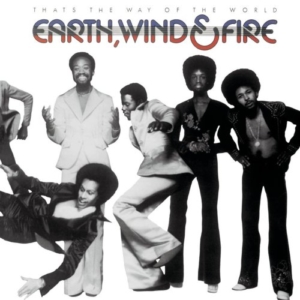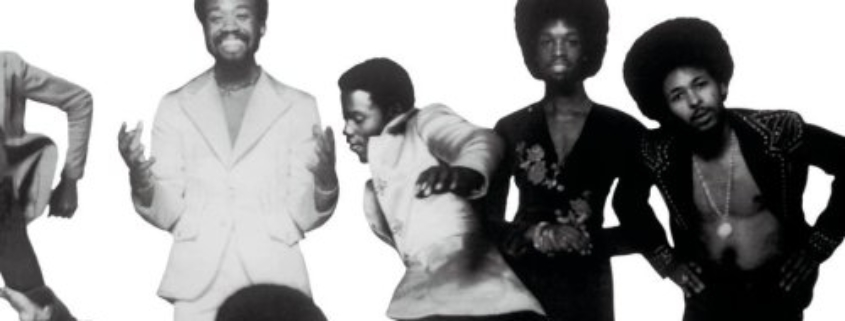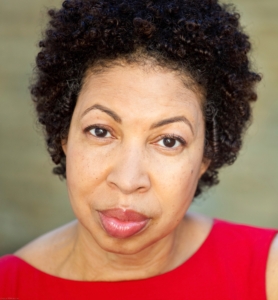Unearthed Earth, Wind & Fire
Writing creative nonfiction presents a challenge: the task of bringing clarity to unearthed memory—snapshots of long forgotten folk, environs, longings, often triggered suddenly, unexpectedly rushing to the surface. These snapshots call the writer to fill in dark spaces, the faded shadows in imperfect memory.
In February, Maurice White, the founder of the seventies jazz-soul-fusion band Earth, Wind & Fire, passed away. Hearing the news caught me off guard. I hadn’t thought of the band leader in many years. I had, however, never stopped listening to one of his songs: one he co-wrote with two other EWF members. The title song to Earth, Wind & Fire’s sixth album, That’s The Way Of The World, filled me with something long ago, and fills me with that same something today—a joy, a lightness, a sense of what’s possible. I’ve listened to it for decades, perhaps once a month, allowing the song to repeat on my iTunes till I tire of it, temporarily. Then, and only then, do I turn the song off, letting it go till the next time I need to replenish that particular psychic well.
 The record was a birthday present from Paulette and Audrey, my younger sisters. They knew I loved the album, and they loved me in the way younger siblings love: sometimes worshipfully, other times not so much, but we were sisters, and it was us against the world. I remember their faces. Late afternoon, our parents still at work, we had the apartment to ourselves. It was our time: time to conspire, bicker, laugh, and eat sweets. Having pooled their money to buy it, my sisters proudly presented me with the gift-wrapped LP. They took pleasure in my squeals of delight. We were close, then. I took our closeness for granted in that way the young do, when the future feels far away.
The record was a birthday present from Paulette and Audrey, my younger sisters. They knew I loved the album, and they loved me in the way younger siblings love: sometimes worshipfully, other times not so much, but we were sisters, and it was us against the world. I remember their faces. Late afternoon, our parents still at work, we had the apartment to ourselves. It was our time: time to conspire, bicker, laugh, and eat sweets. Having pooled their money to buy it, my sisters proudly presented me with the gift-wrapped LP. They took pleasure in my squeals of delight. We were close, then. I took our closeness for granted in that way the young do, when the future feels far away.
Hearts of fire creates love desire
Take you high and higher to the world you belong
Hearts of fire creates love desire
Higher and higher to your place on the throne
* * *
The streets of 1970s East New York, Brooklyn held a vibrant urgency. Rough neighborhood. Outsiders held that saccharin-sweet image evoked by the Presley hit “In The Ghetto.” I prefer the message conveyed in Stevie Wonder’s “Living For The City.” Early mornings, living in a two-fare zone, young and old alike hustled to catch the bus for the short ride to the elevated subway, in order to make it to work on time. In that section of East New York, we had two choices: either take the number 6 bus to the Pennsylvania Avenue station and catch the IRT number 2 train there, or strike out on the much longer walk down Van Siclen Avenue, crossing New Lots Avenue’s commercial district (site of the 1977 NYC blackout riot) in order to catch the number 2 train there. Either way you were headed out of the neighborhood toward downtown Brooklyn and Manhattan. I lacked the patience needed for waiting at bus stops. Once I started high school, I chose to walk.
As I read what I’ve written I ask myself: Stevie Wonder? Am I romanticizing the community of my youth? Perhaps. How has time altered my perception? What am I seeing clearly? What am I manufacturing?
While still in junior high, my morning routine included walking my youngest sister Audrey to elementary school. Paulette (who my parents called the “knee baby”) and I would later stop by the candy store across the street from George Gershwin Junior High for Now & Later fruit taffy or a jumbo pack of bubble gum. The fellas were already busy under the hoops. Street basketball thrived in East New York. You could usually find a game, day or night, at least ‘til the crack epidemic of the 1980s decimated the troops—the same epidemic that caught hold of my sister Audrey years after I left junior high, years after I’d stopped walking her to school. But till then there was the old German bakery where the three of us pooled loose change after school to buy strudel, our snack of choice while watching Dark Shadows. There was the seedy but welcoming Penn Cinema movie house on Pennsylvania Avenue. It ran Superfly and Deep Throat for weeks. I paid to see one and snuck in to see the other.
A dreamy kid, sort of combination streetwise/space cadet, I always managed to float above the fray. Usually with a book in my hand, I knew which subway cars to sit in and which ones to avoid, depending on the time of day. I cultivated the kind of body language and eye contact that discouraged unwanted attention. Quick exits, no time to dawdle, and yet I held about myself a certain quality, a teenage black girl’s version of Harry Potter’s friend Luna.
“No, no,” my younger sisters once protested in an attempt to explain away my behavior. “She’s not stuck up—she’s just in her own world.”
* * *
Floating within my own imagination, with the help of an inner Top 40 hit parade, I managed to avoid the darkened stairwells and psychic stumbles others fell victim to. A soundtrack accompanied me as I maneuvered the streets of East New York, Brooklyn: popular music that spoke to my yearnings, interceding, blocking psychic interlopers masquerading as friends. Earth, Wind & Fire sat at the top of my inner hit parade, and “That’s the Way Of the World” was the anthem that spoke to those nascent longings. Music has that way of informing existence. A harmony, rhythm, lyric, or melodic structure might attach itself to the inner life like a puzzle piece, changing a body’s personal chemistry. It’s like alchemy.
Maurice White once told an interviewer that he “wanted to do something that had not been done before.” White named the group for three of the elements in his astrological chart, and with a strong belief in the healing power of music, he imbued the lyrics of Earth, Wind & Fire with spiritual meaning, infusing the band’s songs with ideas of peace, love, and universal harmony. The entire group, steeped in traditions of jazz, blues, rock, funk, and gospel, was bent on defying classification. They bucked the genre segregation prevalent in the music industry at the time and successfully bridged the gap between what was considered mainstream and what was known as R&B. Philip Bailey, the band’s falsetto-voiced lead singer, said that “Maurice’s whole vision was to kinda sneak a little jazz on people and make it commercial.” The result was a funk-laced, highly melodic fusion of genres. The horn section, reminiscent of big band, added a muscular drive, while guitar and keyboard riffs glided between jazz and rock, and it all supported high gospel lyrics that literally took you to church, lifting you into the possible.
The 1970s brought an identity-seeking nationalist fervor that captured the imagination of the neighborhood’s youth. One group in particular, The Five Presenters, drew on the vulnerabilities of young men, thriving on their thirst for place and identity. An offshoot of the Nation of Islam, Five Presenters believed that God was black and resided only in black males. Women were subordinate—having no God inside of them. This was a problem for me since I knew these fellas. “Gods?—Negro Please.” Still, the group was responsible for lots of name changes. Clarence became Shamick, and Roy became Kassim. My childhood friend Bruce became Shakor. Between the growing nationalism and the fifty or so street gangs co-existing in Brooklyn at the time, many of the young men and women I grew up with succumbed to sad early death, addiction, and incarceration. I was one of the lucky ones. Was that resilience, the random draw of birth order, or a personal soundtrack full of abstract spirituality?
You’re a shining star. No matter who you are.
Shining bright to see, what you can truly be.
That’s The Way Of The World was both the soundtrack and title to a 1975 film starring Harvey Keitel. The film flopped, and the album struggled till the release of the single “Shining Star.” That’s what sent the LP over the top. Releasing “Shining Star” changed everything. It had a joyful funky dance-able groove with motivational lyrics. Becoming one of the best-selling albums of that year, “That’s The Way Of The World” eventually went triple platinum.
 As I develop my writer’s craft, I’m more convinced that genre-bending is required for my own CNF. The disparate nature of the New York City of my youth requires thinking outside convention. Diverse rhythms, racial disparities, confluences of culture, expectations, sensibilities, glaring differences in wealth within the confines of small spaces, architectural schizophrenia, and perception—the differentiation between how I perceived what happened then and how I perceive it now—it all calls for a loose attachment to the devices of traditional memoir and storytelling. There is a struggle for honesty and clarity in the retelling. I’m not sure I know what I’m doing. I’m feeling a lot like my young Luna self, floating above the chaos while delving into the past, attempting to make sense of fragile shards of memory.
As I develop my writer’s craft, I’m more convinced that genre-bending is required for my own CNF. The disparate nature of the New York City of my youth requires thinking outside convention. Diverse rhythms, racial disparities, confluences of culture, expectations, sensibilities, glaring differences in wealth within the confines of small spaces, architectural schizophrenia, and perception—the differentiation between how I perceived what happened then and how I perceive it now—it all calls for a loose attachment to the devices of traditional memoir and storytelling. There is a struggle for honesty and clarity in the retelling. I’m not sure I know what I’m doing. I’m feeling a lot like my young Luna self, floating above the chaos while delving into the past, attempting to make sense of fragile shards of memory.
When Maurice White died last month, a little dam broke, flooding my awareness with long-lost remembrances. His death, that trigger, became a key to unearthing memory for the purpose of filling in my story—one of many keys, combinations of psychic objects, meant to unlock the wall safes within my own subconscious. My long ago hit parade is another such object. There are many safes to open.
As a little kid, I loved the Beatles. I still do. It is said that there is only one cover of a Beatles tune that ever improved upon the original. That was Earth, Wind & Fire’s recording of “Got To Get You Into My Life”. As much as I adored the Beatles, when I first heard it, I’m not sure I recognized the Earth, Wind & Fire’s rendition as the Beatles’ classic. That’s how gloriously distinct it was from the original.
If you look way down in your heart and soul
Don’t hesitate cause the world seems cold
Stay young at heart, cause you’re never, never old
Thank you, Maurice.
Angela Bullock is an actor/writer pursuing an MFA in Creative Nonfiction at Antioch University LA.






